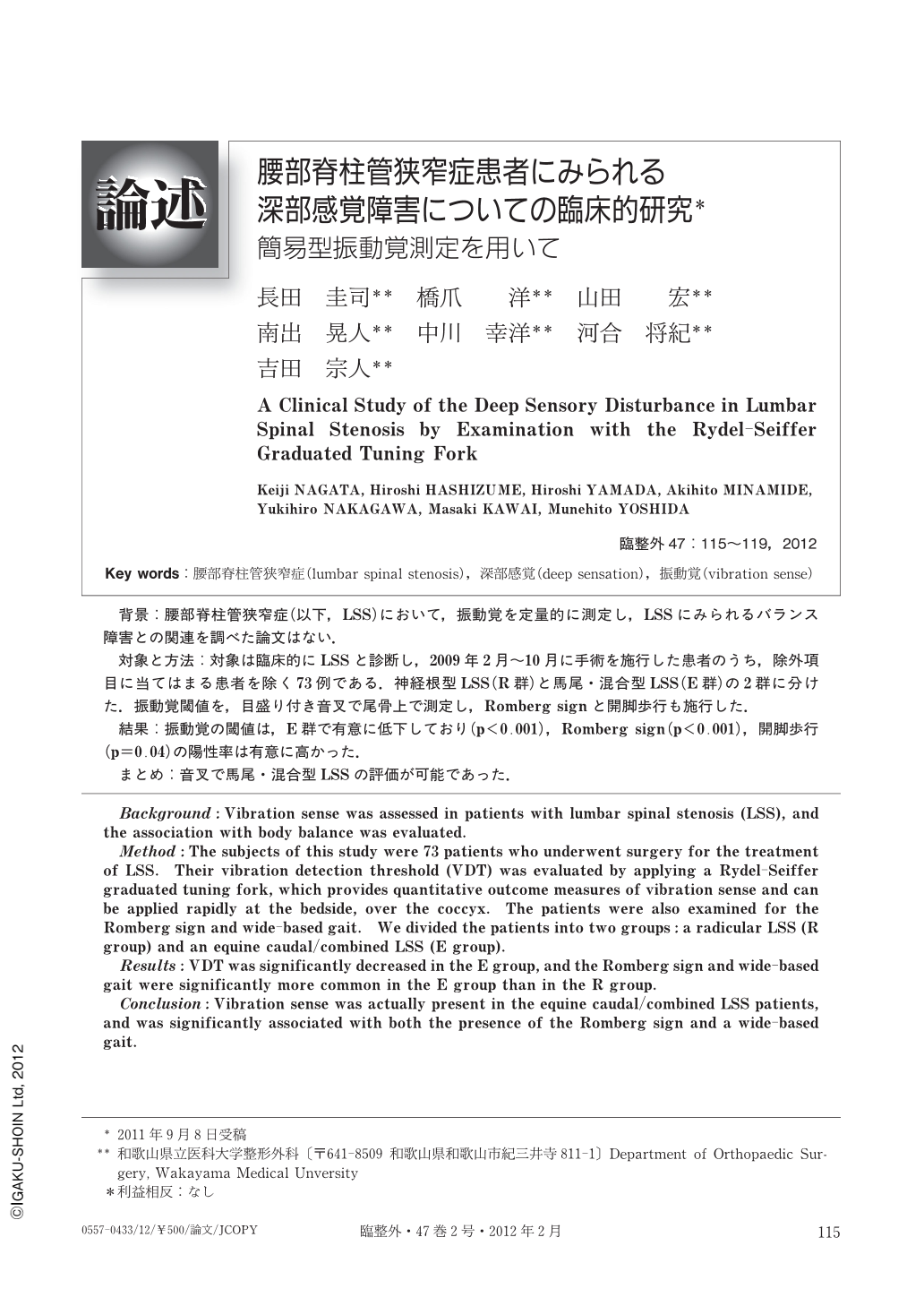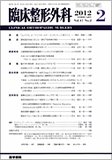Japanese
English
- 有料閲覧
- Abstract 文献概要
- 1ページ目 Look Inside
- 参考文献 Reference
背景:腰部脊柱管狭窄症(以下,LSS)において,振動覚を定量的に測定し,LSSにみられるバランス障害との関連を調べた論文はない.
対象と方法:対象は臨床的にLSSと診断し,2009年2月~10月に手術を施行した患者のうち,除外項目に当てはまる患者を除く73例である.神経根型LSS(R群)と馬尾・混合型LSS(E群)の2群に分けた.振動覚閾値を,目盛り付き音叉で尾骨上で測定し,Romberg signと開脚歩行も施行した.
結果:振動覚の閾値は,E群で有意に低下しており(p<0.001),Romberg sign(p<0.001),開脚歩行(p=0.04)の陽性率は有意に高かった.
まとめ:音叉で馬尾・混合型LSSの評価が可能であった.
Background:Vibration sense was assessed in patients with lumbar spinal stenosis (LSS), and the association with body balance was evaluated.
Method:The subjects of this study were 73 patients who underwent surgery for the treatment of LSS. Their vibration detection threshold (VDT) was evaluated by applying a Rydel-Seiffer graduated tuning fork, which provides quantitative outcome measures of vibration sense and can be applied rapidly at the bedside, over the coccyx. The patients were also examined for the Romberg sign and wide-based gait. We divided the patients into two groups:a radicular LSS (R group) and an equine caudal/combined LSS (E group).
Results:VDT was significantly decreased in the E group, and the Romberg sign and wide-based gait were significantly more common in the E group than in the R group.
Conclusion:Vibration sense was actually present in the equine caudal/combined LSS patients, and was significantly associated with both the presence of the Romberg sign and a wide-based gait.

Copyright © 2012, Igaku-Shoin Ltd. All rights reserved.


